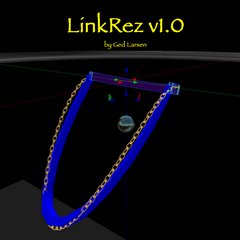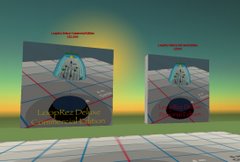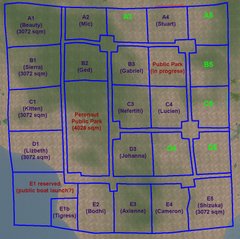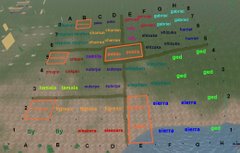The bad news: it seems that properly integrating it with what I've been working on for the past month will require completely re-structuring 3 interacting scripts. [..sigh..] That's shuffling around more than a thousand lines of code (not counting the 500 or so lines of user interface "improvements" I deleted last week because they just didn't work well enough).
But anyhow, here's an exaggerated view of what a dress might look like, if designed for someone who had rather ample lower cushioning. (And no, it doesn't have to be quite so generous -- I just wanted the effect to be obvious.)


This last view is from directly above the center point, so you can see how much more the "back" panels on the left poof outwards.

Essentially, what you can now define is:
- a baseline adjustable "flare angle" amount of poof that all panels have
- a separate adjustable "posterior angle" that is only applied in the back part of the skirt
- potential for tweaking how rapidly the extra "posterior angle" is applied, as you move backwards from the sides of the skirt
As mentioned previously, prims rotate from the center, not from an edge, so the trick was to counteract the tilting inwards of the top of a skirt panel, as the lower part was poofed outwards.
I think a very generous posterior angle could make it very easy to make one of those (and I had to do some serious Google'ing to find this term) Victorian era bustle dresses. (Perhaps I should have asked proper Victorian fashion advice from Miss. Virrginia Tomobola!) Although, if it got extreme enough, the back panels would have to be lengthened, I suppose, to reach the ground, which could also potentially be automated.
Bah. Now to rewriting everything.



